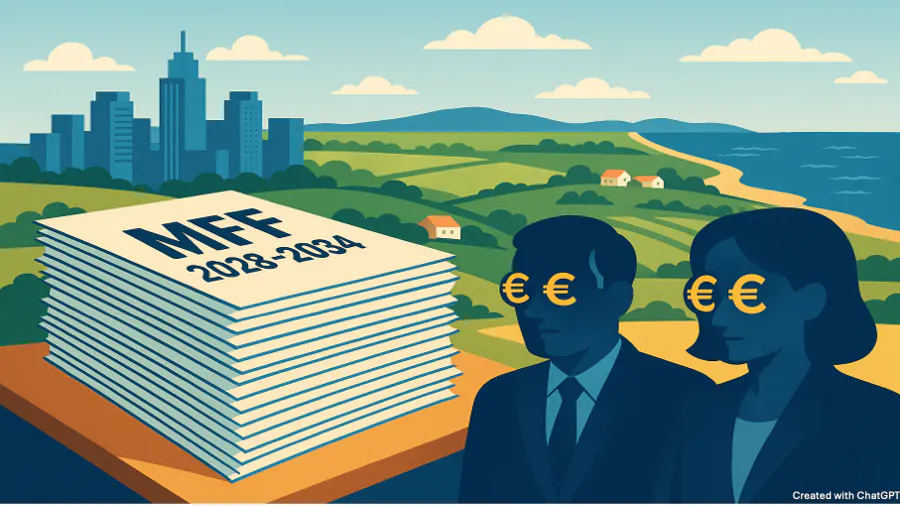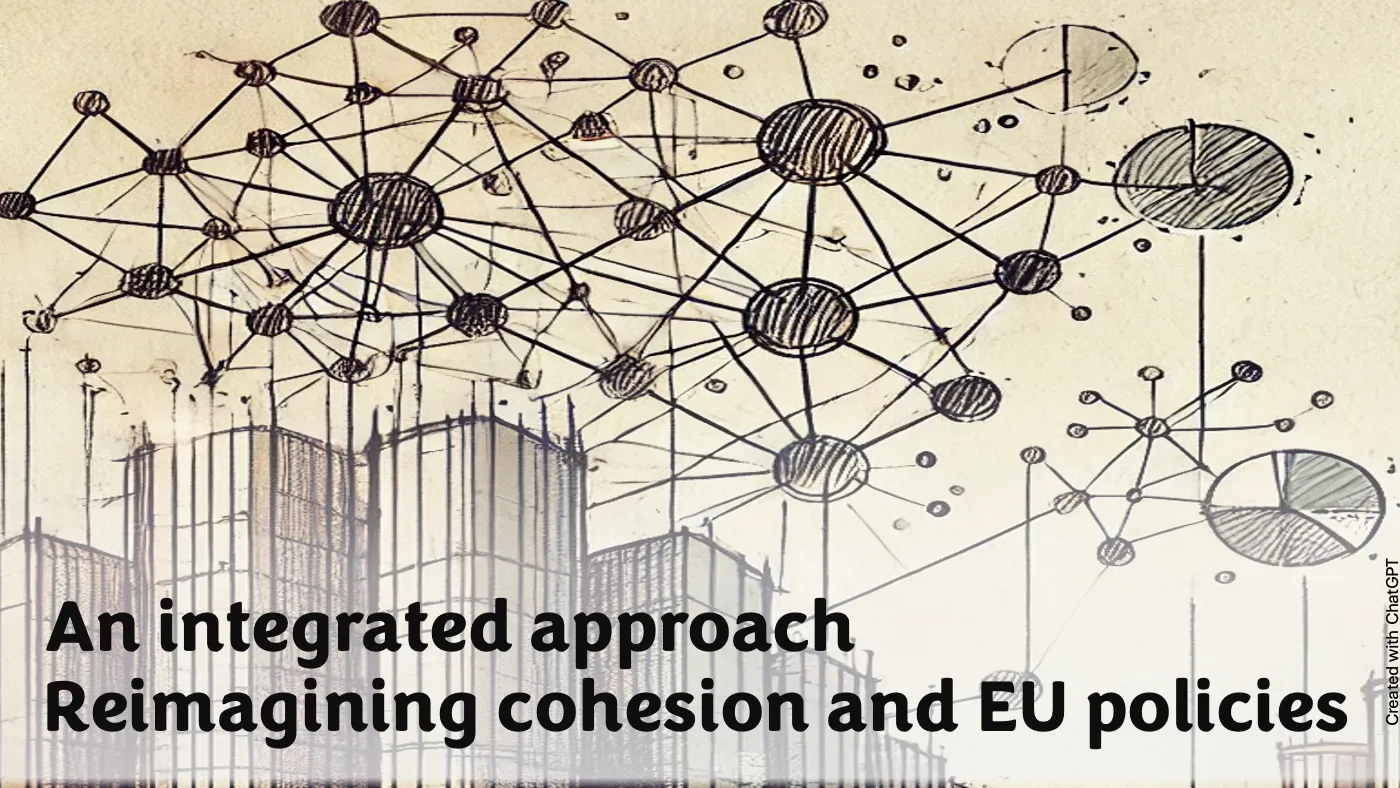The EU’s next budget – a territorial perspective on the MMF 2028–2034 proposal

July 2025
On 16 July 2025, the European Commission unveiled its proposal for the next long-term EU budget: the Multiannual Financial Framework (MFF) for the period 2028–2034. The documents are available here (Si apre in una nuova finestra). Described as a 'dynamic EU budget for the priorities of the future', the proposal is intended to adapt to fundamental shifts in Europe's geopolitical, economic and social landscape. Climate change, an ageing population, trade disruptions and a growing focus on defence require new approaches. In that sense, it makes sense to take a new look at the EU's long-term budget. It should be given a chance.
As expected, critiques swiftly followed – most of which reflected entrenched interests and defended established budget lines. However, rather than getting bogged down in habitual opposition, it would be better to take a serious look at the proposal and acknowledge both its potential and its risks. Indeed, rethinking the structure of the EU budget seems to be good idea.
A new architecture: 4 headings and a “big beautiful fund”
The proposed MMF introduces four overarching budget headings that merge and repackage former spending categories:
Economic, social and territorial cohesion, agriculture, rural and maritime prosperity and security (~54% of budget) – combining Cohesion Policy, Common Agricultural Policy, and other funds, including aspects of defence. This bundle is also marketed as Europe's social model and quality of life, and its backbone is a new integrated fund, which some already call the new "big beautiful fund".
Competitiveness, prosperity and security (~30%) – housing flagship programmes like Horizon Europe, Erasmus, the Single Market Programme, and the Connecting Europe Facility. The backbone of this budget line will be the newly created European Competitiveness Fund.
Global Europe (~11%) – covering external action, the Global Europe Instrument, and the EU’s foreign and security policy.
Administration (~6%) – funding EU institutions, personnel etc.
Firstly, it is unclear what format the proposal will take as it goes through the negotiations, which will probably last a few years. Secondly, even if it makes it through, the question remains what the member states will make of the proposal, given that there is often a lot of flexibility in how the new “big beautiful fund” can be used. People looking at cohesion policy will primarily focus on the proposed new fund and the National and Regional Partnership (NRP) Plans, which seem to be the favoured implementation mechanism.
Cohesion vs competitiveness: a false dichotomy?
While it may seem rational, the proposal actually conceals underlying tensions, not least that between cohesion and competitiveness. At first glance, the proposal risks perpetuating the problematic narrative that cohesion and competitiveness are opposing objectives. Two of the largest headings place them side by side, suggesting a trade-off between addressing disparities and investing in innovation and prosperity. Surely it would be better if the diversity of places in the EU and their development would be presented as a driver of increased competitiveness, rather than as an indicator of the need for compensation
NRP Plans: integration or centralisation?
The proposed National and Regional Partnership (NRP) Plans have attracted a great deal of attention. These are a new instrument designed to guide the use of the “big beautiful fund”. Rather than some 500 programmes , there will be 27 NRP Plans and one Interreg Plan. These plans pave the way for more integrated investment strategies, which could potentially bridge long-standing divides between policy domains (e.g. the Common Agricultural Policy (CAP) and the European Regional Development Fund (ERDF)), and rural and urban development), and ease coordination across funding streams.
The proposal continues to emphasise multi-level governance and partnership principles, which is good. However, these commitments are at odds with the idea of one NRP Plan per member state, with the national government acting as the sole interlocutor with the Commission. Although devolved implementation is possible, the degree of regional involvement is at the discretion of the national government.
This structure risks marginalising regional and local actors, reducing them to participants in pro forma consultation processes rather than genuine key players in territorial development. In effect, the territorial perspective and subnational voice may depend on the goodwill of central governments unless stronger safeguards are implemented.
Reforms as a lever for territorial governance
A particularly noteworthy feature of the proposed NRP Plans is their ability to support investments and reforms in various areas of public policy and administration. With over 50 eligible reform areas listed in the intervention fields, there are ample opportunities to improve the conditions for effective governance at local and regional levels. This goes beyond traditional infrastructure or service funding to open doors to reforms in various domains of public policy making and administration can be financed. If used effectively, this could create many opportunities to improve the context and preconditions for effective governance of local and regional development, as well as addressing persistent structural bottlenecks. However, this potential is only realised if reforms are identified and prioritised effectively.
Performance-based logic: simpler or riskier?
The proposal for the NRP Plans introduces a significant simplification of the financial logic by shifting from reimbursing incurred costs to making payments based on achieving agreed outputs. While it may be ambitious to call this a fully-fledged performance-based model, it certainly signals a shift towards outcome orientation. This could simplify matters for many of those involved, particularly by reducing administrative complexity and focusing attention on tangible results. However, several questions remain unanswered. Not least: how are outputs and milestones valued – and who decides what, for example, a law adopted or a regulation implemented is worth? Such assessments can become contentious, particularly when the output is not a physical deliverable, but rather a legislative or institutional measure. Another issue is risk sharing: what happens if milestones are not reached due to external factors such as rising inflation, cost increases or changing geopolitical conditions? Without clarity on these points, there is a risk that actors will become risk-averse. Taking a fair and context-sensitive approach to performance will therefore be crucial.
A question of political will
The NRP Plans are praised for introducing greater flexibility. Member states can now more easily combine investments with reforms, adopt cross-sectoral approaches and adapt interventions to evolving needs. This could foster a more agile and place-sensitive form of territorial policy. However, further consideration is needed for the many 'ifs' and 'buts'.
None of this is happening in a neutral context, in terms of both future implementation modalities in the member states and the further negotiation of the MFF and its final outcome.
The MFF 2028–2034 negotiations will be shaped by broader political and economic dynamics, such as:
Net contributors vs net recipients;
Defence and migration control competing with territorial development;
A shift in some capitals towards agile policy responses and away from structural policies.
A territorial lens for Europe’s future
Overall, the MMF proposal and the NRP Plans do not seem to be liked very much at first sight. However, they do hold some good ideas and potential for EU budgeting that might fit the needs of our time. However, there are still many questions to be answered and discussed. In this debate, the territorial perspective must not be overlooked. Important questions to be asked are:
How does the proposal empower local and regional stakeholders to promote the development and prosperity of their areas?
How does the proposal increase local and regional resilience, enabling places to cope with changing circumstances?
How does the proposal ensure that the EU offers a positive future outlook for all places and people within it? In other words, how does it prevent places or societal groups from being left behind?
How does the proposal ensure that the 27 NRP Plans come together to contribute to a coherent EU territory, rather than creating a jigsaw puzzle of conflicting plans?
What is perhaps most missing is a shared territorial vision for the EU, and an understanding of how the EU budget can help us achieve this vision.
Over the summer, we will take a closer look at the new proposals for the EU after 2027. If you have any thoughts on this, please let us know.
by Kai Böhme
 (Si apre in una nuova finestra)
(Si apre in una nuova finestra)